Skin traction
1. General considerations
Disadvantages of prolonged skin traction
- Inadequate pain relief
- Loosening
- Constriction
- Friction with skin necrosis
Traction configurations
Straight skin traction is achieved with weight over the end of the bed.
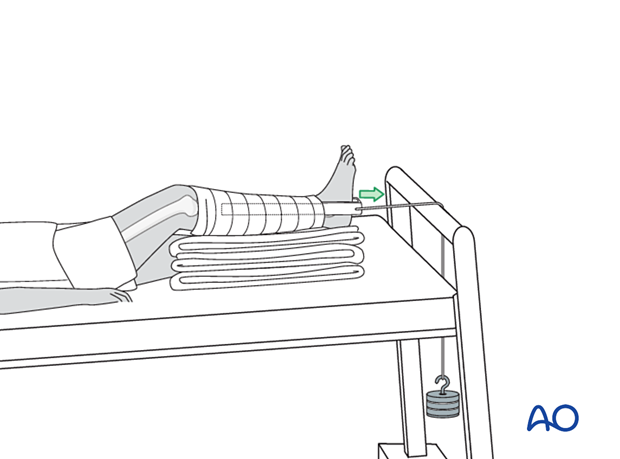
If skin traction is likely to be used for more than 24 hours, greater patient comfort and better control of the fracture can be achieved using balanced skin traction (Hamilton-Russell), which allows for a slightly flexed knee and hip and elevation of the extremity.
This configuration of traction and leg support also can be adjusted to control femoral rotation by directing the upward support medially or laterally.
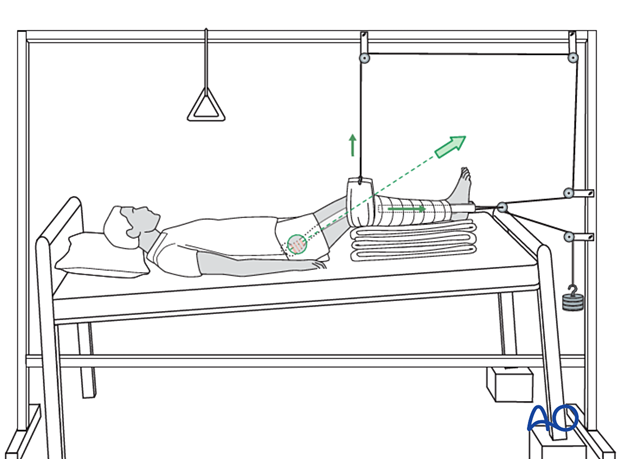
2. Application of skin-traction kit
This photograph shows a commercially available skin-traction kit.
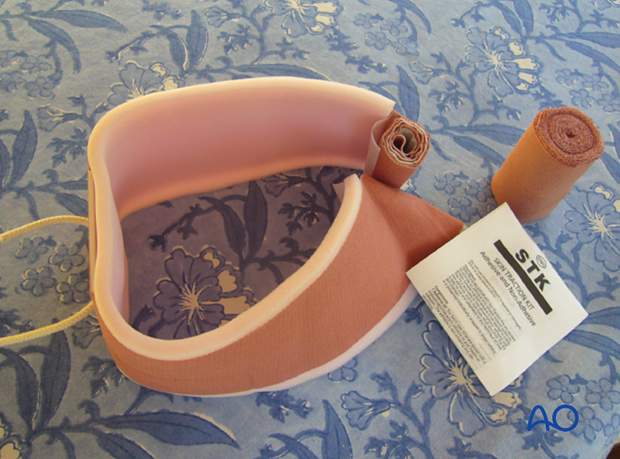
A simple skin-traction kit can be made easily with:
- Roll of nonelastic adhesive strapping (approximately 3 inches, 8 cm, wide)
- Foam padding for the malleolar region
- Wooden spacer block (suitably drilled for cord attachment)

Before applying the adhesive traction strip, paint the skin with friar’s balsam (tincture of benzoin) or equivalent.
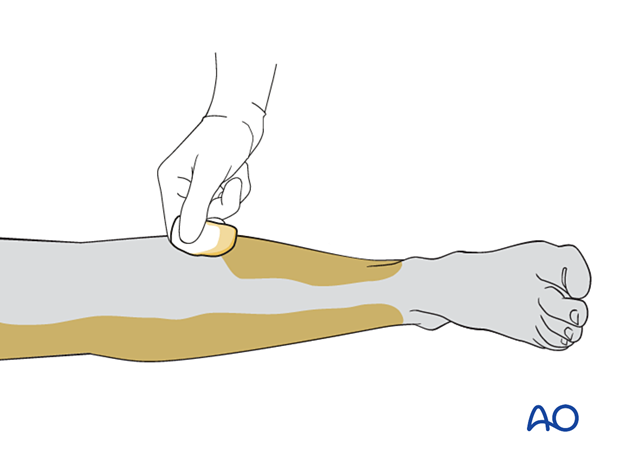
Apply the strip to the lower leg from the level of the knee to the supramalleolar region.
Apply the strapping to the inner side of the leg, then unroll it a little further to allow placement of the spacer and the foam. Then apply it to the outer side of the leg.
It is important to ensure that the wooden spacer lies transversely, ie, parallel to the sole of the foot.
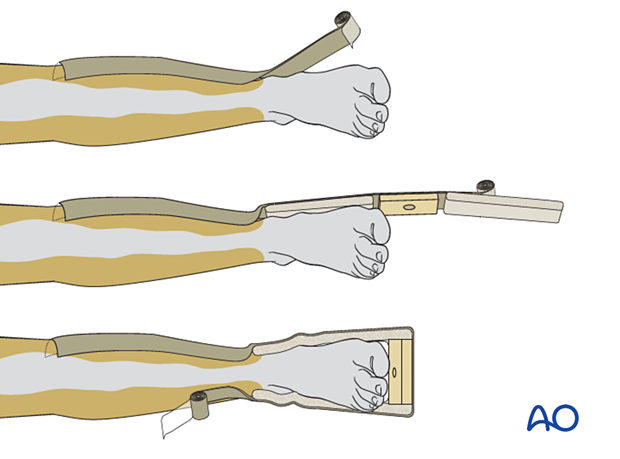
To prevent the development of blisters, the skin traction needs to be applied without folds or creases in the adhesive material, and the covering bandage should be nonelastic.
Should a crease be inevitable due to the contour of the limb, the creased area should be lifted and partially slit transversally, and the edges overlapped.
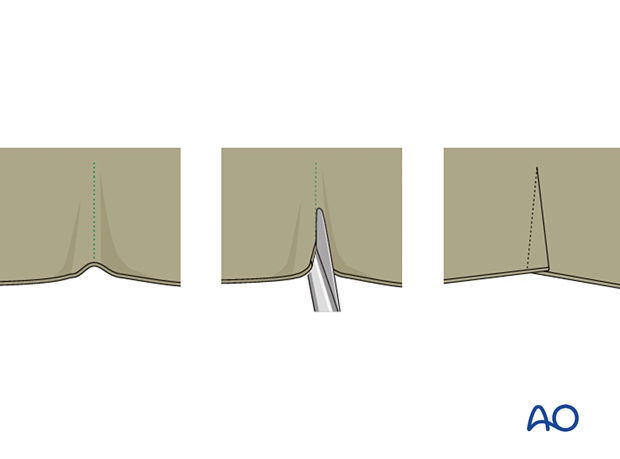
Once the adhesive strip is satisfactorily in place, ensuring that the padded lower section overlies the malleoli, an inelastic bandage is carefully wrapped around the limb from just above the malleoli to the top of the strip.
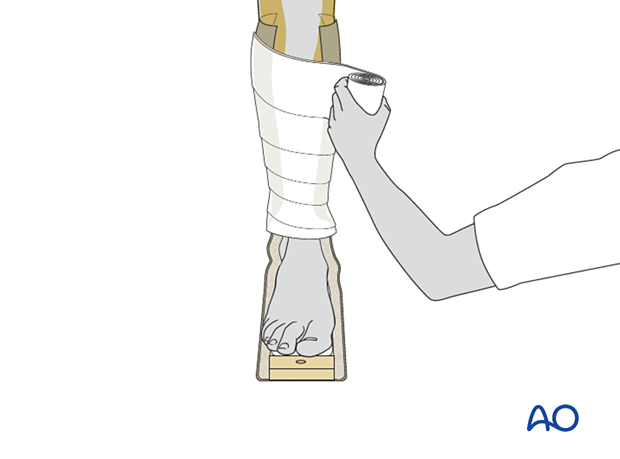
Apply the overlying bandages spirally, overlapping by half.
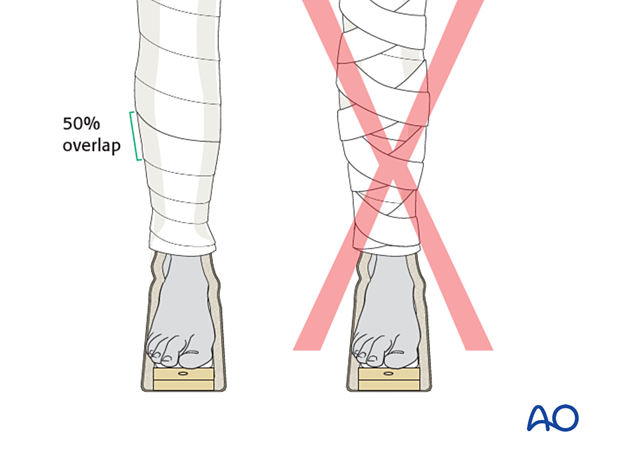
3. Positioning of the lower extremity
As the proximal fragment position can not be influenced, use traction to align the distal extremity to align the fracture. Typically, this requires mild flexion, abduction, and slight external rotation.
4. Straight skin traction
With straight skin traction, add padding under the patient’s calf to keep the heel from pressing on the bed beneath it.

5. Balanced skin traction
To apply balanced skin traction, a dedicated orthopedic bed or a standard bed in combination with a mobile Balkan beam frame is needed.
Place a padded sling behind the slightly flexed knee and apply skin traction to the lower leg. The traction cord and pulley system are shown here.
The principle of the parallelogram of forces determines that the upward pull of the sling and the longitudinal pull of the skin traction create a resulting force in the line of the femur, as illustrated.
This configuration of traction and leg support can also be adjusted to control femoral rotation by moving the overhead bar medially (internal rotation) or laterally (external rotation).

A simpler alternative to this technique involves two separate systems:
- A sling suspended from the overhead frame or supported with a rope and pulley counterweight to provide an upward force, which lifts the leg off the bed
- Longitudinal (distal) traction applied with skin or skeletal technique
The resulting vector force, as illustrated, is oblique (the vector sum of the upward and distal forces applied by the two weights).

6. Assessment of reduction
After traction has been set up, take an x-ray to check for acceptable fracture alignment.
Readjust as necessary.
7. Mobilization in bed
Assisted active mobilization and chest physiotherapy should start from the first day.
With the aid of a trapeze bar, as shown, patients can lift themself, and the traction system allows mobilization of the knee.













